The mission of investigative reporters naturally brings them into conflict with entrenched institutions, powerful individuals, corruption, cover-ups, and injustice. They have a unique, sometimes paradoxical perspective on law enforcement: part confidante, part confederate, part watchdog. Their work is self-determined and self-driven, and they frequently work alone.
You don’t have to be an ex-inkslinger to see what makes reporters a compelling focus for crime fiction, but it certainly doesn’t hurt. Journalists turned mystery writer abound. Michael Connelly was a finalist for the Pulitzer before becoming a crime reporter for the Los Angeles Times and moving to the city that would become his muse. Laura Lippman’s Tess Monaghan inhabits the mean streets of Baltimore, a city Lippman knows from her time at the Baltimore Sun. Long before her juggernaut success, Gillian Flynn studied stories for a living as a critic for Entertainment Weekly.
Laura Chambers, the heroine of my debut novel, Last Girl Gone, is a down-and-out reporter washed up in the insignificant hometown she’s always hated. Her career at the Boston Globe collapsed spectacularly, but she’s still got grit, a relentless sense of curiosity, and the skillset necessary to chase down leads—and killers. A fundamental component of any mystery is the search for truth, and for an investigative journalist, that’s the first line of the job description. Here are eleven essential mysteries starring a reporter.
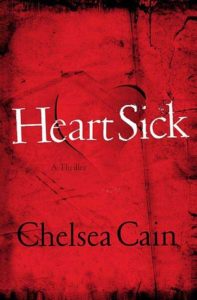
Heartsick, by Chelsea Cain
The twisted, borderline-romantic relationship between detective Archie Sheridan and his quarry, serial killer Gretchen Lowell, is the meat of this thriller. Kidnapped, tortured, and seduced by Lowell—but also spared by her—Sheridan is a broken man drawn back into the fray before he’s ready. His sudden return draws the attention of young and intrepid reporter Susan Ward, and she shadows him into the Portland’s darkest corners. Together they struggle to find their footing, solve the case, and to sever the heartstrings connecting Sheridan and Lowell once and for all. Chelsea Cain’s years as a contributor to The Oregonian certainly informed her choice for Sheridan’s unorthodox partner.

Sharp Objects, by Gillian Flynn
A former television critic, Gillian Flynn sliced off a bit of her biography and then perverted it to create the paranoid, alcoholic Camille Preaker. A reporter bound for a disturbing homecoming, Camille is ostensibly on assignment to write about the murder of two young girls. Instead, her already fragile mental state deteriorates and she slides into obsession, all while enduring abuse from the family she tried to leave behind. No one captures the grim, hopeless claustrophobia of the human condition quite like Flynn, and her searing debut leaves the reader wondering if there aren’t some rocks that should never be turned over.
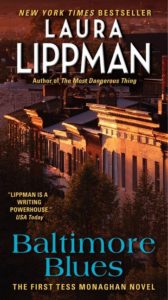
Baltimore Blues, by Laura Lippman
Tess Monaghan is the lead of a dozen novels, and by the third in the series she’s a bona fide private investigator. Not so when we meet her in Lippman’s debut. It’s a transitional time for Monaghan, whose reporting job has just gone belly-up along with her newspaper. Like Robert B. Parker’s Spenser (with an ‘s,’ like the poet), she’s governed by a strong moral code, not to mention the need to make a living, two qualities that align her with the downtrodden and the needy. Luckily, her career as a journalist has left her armed with contacts, investigative skills, and an intimate knowledge of the city—everything she needs to make a difference.
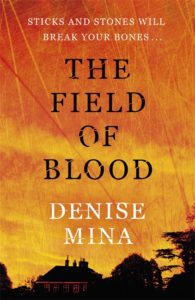
The Field of Blood, by Denise Mina
They were still traveling, into the dark. That’s the opening line of this book starring reporter Patty Meehan. Along with Ian Rankin and Val McDermid, Mina is part of the Tartan noir subgenre, and her series opener sees Meehan navigating the depressing streets of Glasgow circa 1981. A murdered child turns out to be her fiancé’s cousin, plunging Patty into a gripping mystery, and setting her on course for the first big story of her career. Come for the crime, but stay for Mina’s fully-realized depiction of a struggling female journalist in an era before they were common.
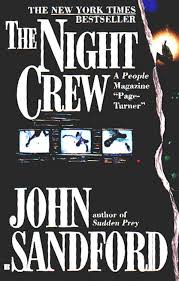
The Night Crew, by John Sanford
Sandford took the night off from his Prey series to author this standalone about a freelance Los Angeles news crew tasked with capturing the city’s crimes between dusk and dawn. Anna Batory is the leader of a ragtag team shaken first by witnessing a suicidal nosedive from five stories up, then again by the death of one of their own. With a premise reminiscent of the outstanding film Nightcrawler (though the book predates the movie by seventeen years), this caper showcases Sandford’s savvy as another Pulitzer-nominated former journalist.
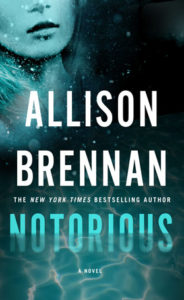
Notorious, by Allison Brennan
Maxine Revere is a celebrity. She has her own television show dedicated to solving cold cases, and her extremely public work as a journalist has made her, well, notorious. Home for the funeral of an ex-friend, she’s thrust into an unexpected mystery when the shooting death of a construction worker at her old high school intertwines with unanswered questions about her friend’s supposed suicide. Soon she has no option other than to rely on her investigative know-how, and no choice but to bury old ghosts. Brennan is prolific—Notorious was her twentieth book—and she’s now five novels deep into the continuing adventures of Max Revere.
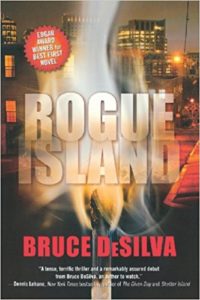
Rogue Island, by Bruce DeSilva
DeSilva’s debut earned him an Edgar Award for Best First Novel, and his industry experience shines through on every page. He’s another example of a career journalist slinging ink in a new direction, but unlike Connelly, he doesn’t shy away from using a reporter as his main character. We follow a disenchanted Liam Mulligan hot on the trail of a serial arsonist burning up his hometown of Providence, Rhode Island. Mulligan has an old-school sensibility that makes him a spiritual successor to the newspapermen of yesteryear, and here we get to see DeSilva’s expertise on full display.
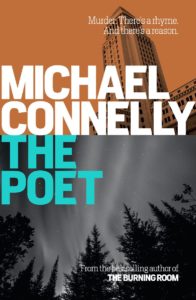
The Poet, by Michael Connelly
Connelly has tended toward protagonists in the two other professions most frequently intersecting with criminals: police officers and lawyers, the very people he was charged with observing during his years as a journalist. The exception is Jack McEvoy, a reporter on the crime beat whose next story hits too close to home. When his homicide detective brother takes his life in a lonely parking lot, only McEvoy is convinced of foul play. A one-sentence suicide note quoting the work of Edgar Allen Poe acts as connective tissue, linking his brother’s death to other murders, the oeuvre of a serial killer bent on targeting law enforcement. McEvoy returned after a thirteen-year hiatus in Connelly’s The Scarecrow.
Every good mystery needs a twist, and this reading list has one too: our last three books aren’t fiction at all, but rather genuine accounts of reporters plunged into actual thrillers.
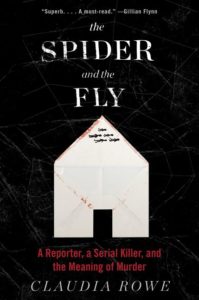
The Spider and the Fly, by Claudia Rowe
Kendall Francois killed eight women in two years, strangling prostitutes and stuffing their corpses in his crawlspace. Rookie reporter Claudia Rowe gets him to go on the record, but there’s just one condition: in exchange for his tale of death, he wants the story of her life. Half true crime, half memoir, this piece of epistolary non-fiction plays out like a real-life version of The Silence of the Lambs.
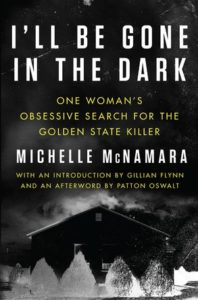
I’ll Be Gone in the Dark: One Woman’s Obsessive Search for the Golden State Killer, by Michelle McNamara
In one of the ultimate examples of life imitating art, McNamara’s blockbuster examination of a serial killer terrorizing California may have actually played a role in his capture. Posthumously published in February of this year, Joseph James DeAngelo was arrested just two months later. He was known variously as the Visalia Ransacker, the East Area Rapist, and the Original Nightstalker, and prior to McNamara’s work, he was usually labeled with the unmemorable initialism EAR/ONS. But a writer knows the power of words, and by branding him the Golden State Killer, McNamara burned his crimes into the public consciousness. She forged a path as a new breed of citizen journalist before dying unexpected at the age of forty-six without ever knowing her work’s true impact.
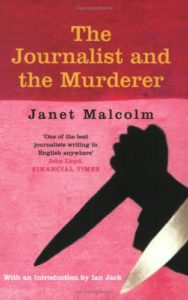
The Journalist and the Murderer, by Janet Malcolm
A seminal work on journalistic ethics, Malcolm goes meta with this meditation on the inherently duplicitous relationship between reporter and subject. Dr. Jeffery MacDonald stands accused of murdering his pregnant wife and their two daughters, and non-fiction writer Joe McGinniss spends years befriending him in order to write a book. He assures MacDonald the book will exonerate him, but when it’s finally published, McGinniss’s bestseller throws MacDonald under the bus. Malcolm perches above this fray, hers a story about the compromises necessary to gain access to any story in the first place, and the ultimate inevitability of betraying one’s source. She grapples with the core, contradictory conflict of her profession: that a journalist must lie in order to lay hands on the truth.

















